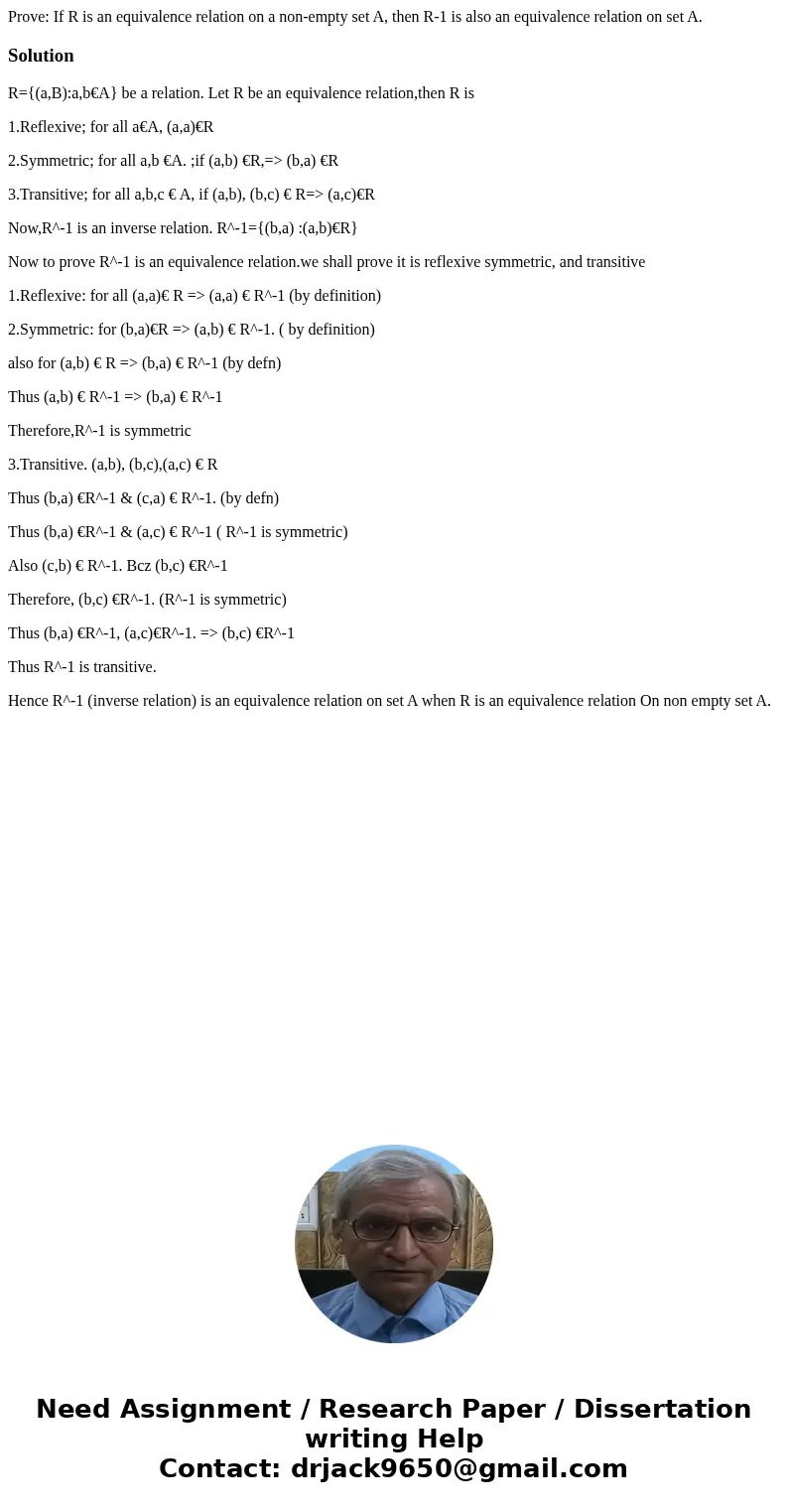Prove If R is an equivalence relation on a nonempty set A th
Prove: If R is an equivalence relation on a non-empty set A, then R-1 is also an equivalence relation on set A.
Solution
R={(a,B):a,b€A} be a relation. Let R be an equivalence relation,then R is
1.Reflexive; for all a€A, (a,a)€R
2.Symmetric; for all a,b €A. ;if (a,b) €R,=> (b,a) €R
3.Transitive; for all a,b,c € A, if (a,b), (b,c) € R=> (a,c)€R
Now,R^-1 is an inverse relation. R^-1={(b,a) :(a,b)€R}
Now to prove R^-1 is an equivalence relation.we shall prove it is reflexive symmetric, and transitive
1.Reflexive: for all (a,a)€ R => (a,a) € R^-1 (by definition)
2.Symmetric: for (b,a)€R => (a,b) € R^-1. ( by definition)
also for (a,b) € R => (b,a) € R^-1 (by defn)
Thus (a,b) € R^-1 => (b,a) € R^-1
Therefore,R^-1 is symmetric
3.Transitive. (a,b), (b,c),(a,c) € R
Thus (b,a) €R^-1 & (c,a) € R^-1. (by defn)
Thus (b,a) €R^-1 & (a,c) € R^-1 ( R^-1 is symmetric)
Also (c,b) € R^-1. Bcz (b,c) €R^-1
Therefore, (b,c) €R^-1. (R^-1 is symmetric)
Thus (b,a) €R^-1, (a,c)€R^-1. => (b,c) €R^-1
Thus R^-1 is transitive.
Hence R^-1 (inverse relation) is an equivalence relation on set A when R is an equivalence relation On non empty set A.

 Homework Sourse
Homework Sourse